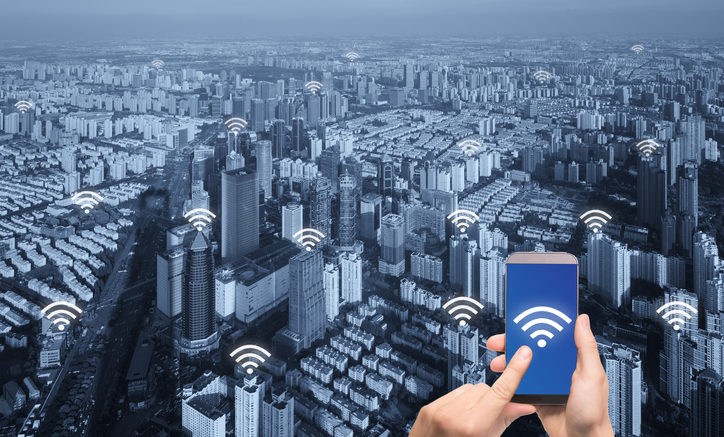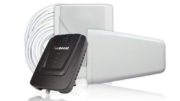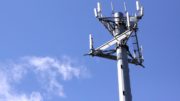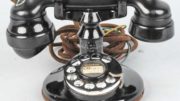Do you have good cell service? How do you know? Most people encounter bad service every day and aren’t even aware of it. They just think to themselves, “the internet is slow.” Maybe they notice that someone asks them to repeat themselves and they think, “I was mumbling.” The truth is that up to 95% of people experience bad cell service every day, usually at home or in a small business.
How is cell phone service measured?
In order to understand how cell service is measured, you need to understand that a cell phone is really a fancy two-way radio. It uses digital technology and all sorts of tricks, but at the end of the day signals are broadcast from your phone and signals are received by your phone.
It’s not easy for you to know how well the signals from your phone are received by the cell tower. Cell towers don’t really transmit that kind of information back to the phone for some reason. But, you can tell how well signals are being received and that gives you some idea how far away the cell towers are. The further away they are, the less likely your phone can reach them.
The rabbit hole of dBm
Cellular phone signals are measured in dBm. dBm (which should be pronounced “decibel milliwatts” but is usually pronounced “dee-bee-emm”) is a little bit hard to understand. A milliwatt is 1/1,000th of a watt. One watt is about enough power to make an LED flashlight or nightlight work. So this is a tiny little bit of electricity indeed.
It’s even tinier because generally cell service is measured in fractions of a milliwatt. Understanding decibel milliwatts isn’t easy. I’ve tried to explain them here. In order to understand them you need to understand what used to be called “new math.” The power reaching your phone is never actually one milliwatt, it’s generally less than that. Numbers less than one milliwatt are shown as negative numbers. -10dBm is .1 milliwatt. -20dBm is .01 milliwatt. -100dBm is .0000000001 milliwatt.
You’ll need that information in order to understand RSRP.
RSRP and understanding weak signal
If you look at real signal meters measuring your cell signal, you will notice that the signal is referred to as RSRP. RSRP stands for “Reference Signal Received Power.” This is the truest measurement of the cell signal you can actually use.
Cell signals are everywhere. In most areas, you can receive signal from more than one tower at the same time. So, your phone may receive strong signals, or the total amount of signal may seem strong. However, the truth is that your phone is using one tower at a time primarily. The cellular system allows your phone to be in communication with multiple towers so that you don’t lose signal as you move. (That’s kind of the point.) But there’s always one that’s the primary.
Each cell tower puts out its signal and your phone measures it constantly. Generally the phone chooses the most powerful signal to use. That signal from the cell tower is referred to as a “reference signal” and the power of that signal, as it’s received by your phone, is the Reference Signal Received Power. It’s the critical measurement of cell phone performance.
How much signal do you need?
Traditional wisdom says that your phone can do well as long as the signal is somewhere between -50 and -100dBm. (To make things as confusing as possible, -100 is weaker than -50, by quite a bit. Numbers closer to zero are always stronger.) You’ll never get more signal than -50 even if you’re standing right next to a cell tower. If signals are weaker than -100 you’ll start losing calls and having problems with data.
The challenge, though, is measuring RSRP. Android phones can do it with free apps, but you can’t always be sure that the signal the app reports is the one your phone is really using. iPhones report RSRP but their numbers are often confusing and don’t have a lot to do with the real world. If you’re really serious you’ll need the kind of meter the professionals use. With one of these, you can get an idea of all the frequencies in use around you. Then, using free apps for cell phone tower mapping, you can coordinate those signals to different carriers.
It seems like a lot of work, right?
Mapping out all the cell frequencies in your area sounds like a lot of work. If you’re a professional installer, you’ll want to do it. But, if you’re just trying to get better cell service at home, you’re better off simply putting up a cell phone signal booster. Cell phone signal boosters take weak signal from outside and amplify it up to 10,000,000 times to make strong signals inside. They’re easy, DIY installs and they cost less than a typical phone. They last for years and cover every device in your home. It’s worth checking out the great selection of cell phone signal boosters at Solid Signal!





